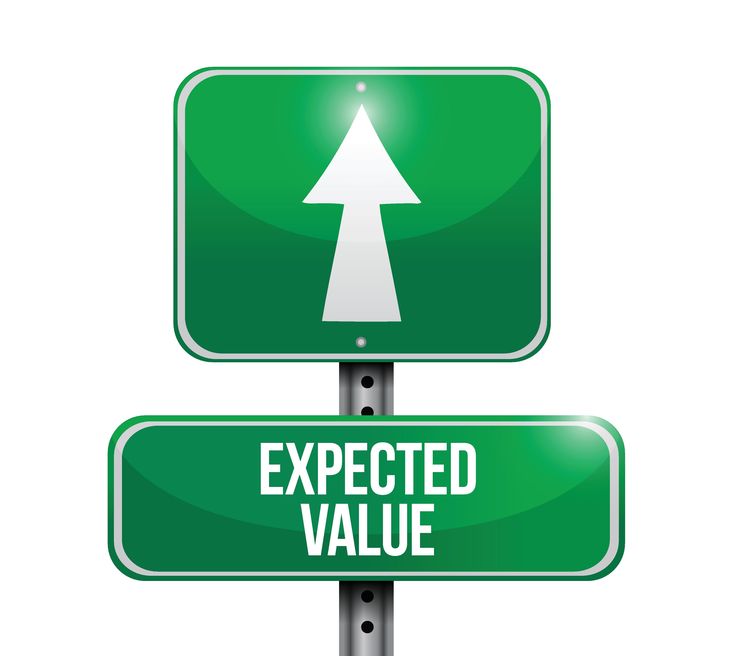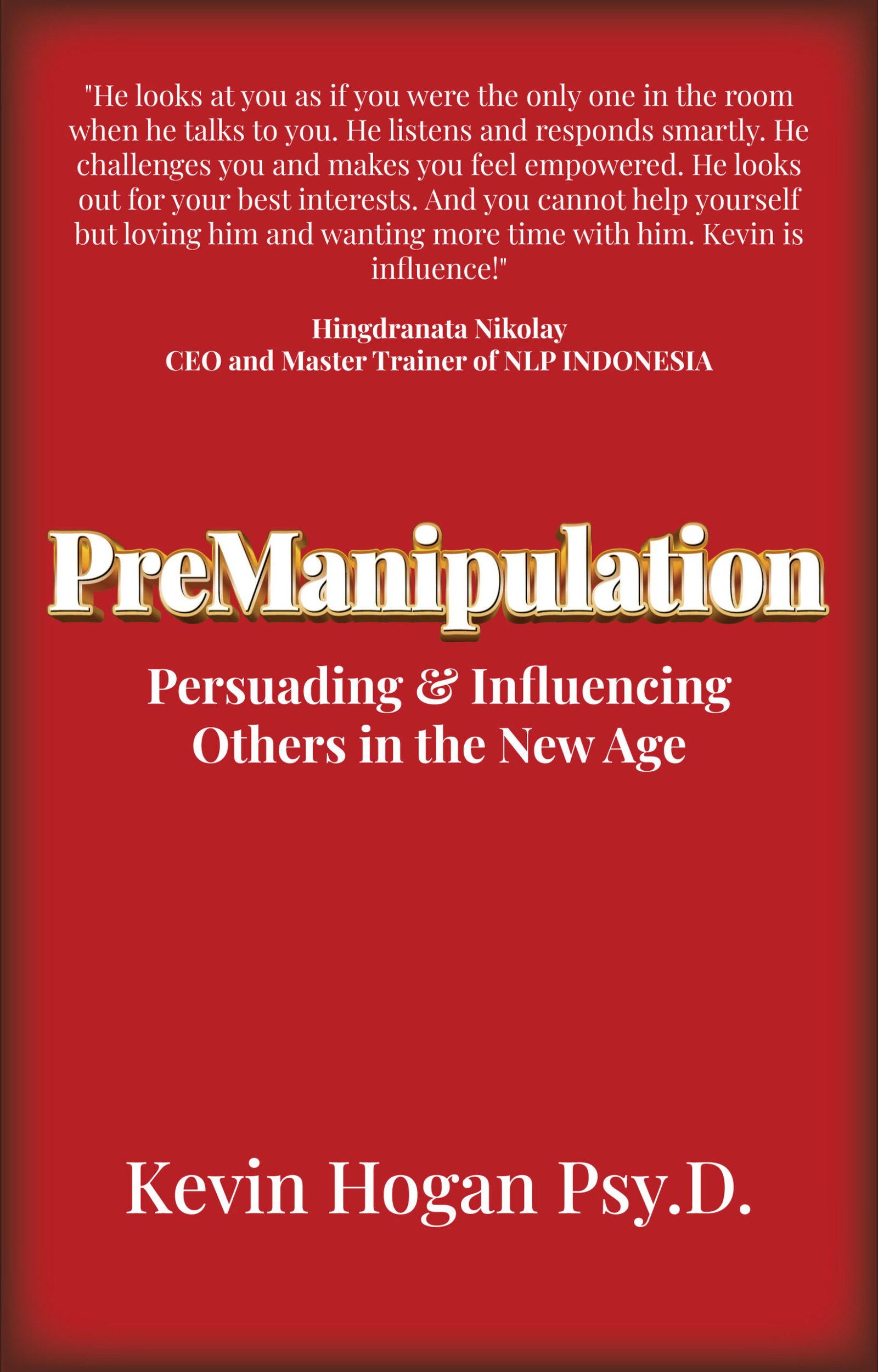Today I’ll show you how to predict who takes more risks simply based
upon visual characteristics of people. (Profiling is real life.) And
then I’ll show you the research about educated vs. uneducated people and
you’ll find out who is likely to take more risks! And I’ll show you one
simple way to calculate what is a good choice for your client and what
is not.
Finally, I’m going to give you 3 strategies for presenting proposals
your client might consider “risky” and leading them to take the
risk…and bet on you!
Risk isn’t easy to see when it’s pretty or looks fun. Consider the Powerball.
“It’s the stupid people tax.”
I’ve said it forever and keep on saying it.
Remember when you won the lottery? (with Powerball being the real poverty creator.
Wait, you either a) didn’t ever “play” or you did and there is no reason to remember anything else. Of course you didn’t “win.”
Lots of states still don’t allow legalized gambling, for reasons that are mind blowing.
“We don’t want people to get addicted to gambling.”
And no one can tell you what that means beyond, “they just can’t help themselves or they just can’t stop.”
And of course they can.
That same “we” is the government.
State and local governments kept around 35 BILLLION dollars in fees in the lottery.
Let me break this down for you in simple terms.
The government gives your gas station the lottery tickets and they sell a ticket making 7 cents on the sale of the ticket.
The government keeps about 43% of the money from the lottery.
Then there is prize money! About 50% is paid out to the people who buy the tickets.
Any bet that pays only 50% of what you bet is a downright deadly bet. If not already broke you will go broke quickly.
Now it gets even more criminal:
Lottery winnings are taxable. If you win a million dollars the government takes about 40% of that money depending on what state you live in, in taxes.
So they payout 50% to a few of the players and then tax it. Now the government gets back that extra 50% (40% tax on half of the money).
So how does it play out in the end.
The “taxpayer” (really it’s just one person out of millions of people buying thousands of dollars of tickets) ends up keeping about 25 out of 100%. The government gets over 70% of each ticket, the gas station 7% and the player 20%.
They keep $70 out of each $100 spent. Seventy cents out of a dollar.
You don’t even need to file a tax form! They just grab it from you.
That is theft.
Let’s compare that to a casino.
The Roulette Wheel is one of the worst bets in a casino. It’s a bet for stupid people.
The casino keeps over 5% of every bet. (In the Lottery, the government keeps over 70% of every bet.)
In other words $100 turns into $95, turns into $90, turns into $85, all the way down to zero dollars.
It doesn’t matter which bet you make the take of the house is 5% or more for every bet.
The wheel can’t be beaten. I haven’t played the roulette wheel since I was a kid.
Craps has much better odds! If you bet on the “Pass Line” (you are going to roll two dice pray for 7/11 or you get get a point 4/5/6/8/9/10 and then have to hit that point before you roll another 7)
What does the house keep?
1.5% but you can actually reduce that down to about 0.75% by betting an additional bet after your original bet on the “Pass Line.” This additional bet is exactly 50/50. Only an idiot wouldn’t take this “second” bet if they are already betting the pass line.
There ARE all kinds of stupid people bets on the craps table that are worse than roulette but only the players who are superstitious will play those bets.
Craps is a lot of fun. Long term? You’re going to get beat. But short term you can have a lot of fun and walk out a winner with self regulation fairly often.
Ultimately I can show you how to make those almost even money bets in about 5 minutes and you’ll have tons of fun.
Government keeps 70% of lottery bets, casino keeps < 1% of craps bets.

A significant aspect of getting people to change or to buy you, your product or service…is about causing them to “take a chance.” “Take a risk.”
When you ask someone to do business with you, you might think of it in terms of “making a sale.”
However, people think of the outcome of your efforts in terms of risk of loss of something (money, popularity, respect of others, being judged foolish) which is manifest in FEAR.
Chance of winning $100 in the lottery is 1/14,000.
“The odds of winning are 1 in 300 million and I don’t live at 51 Diameter Street, Apartment 303 in Jacksonville.”
“Huh?”
“That’s the person who actually will win. Everyone else in the country will lose, everyone.”
As you PRESENT risk to your client and customer, you want them to say “yes.”
The first aspect of risk you must communicate to another person is that YOU UNDERSTAND RISK. You do this with story and facts. Be “right” for the other person.
Present only ideas that are in their very best interest and be able to back up WHY.
If you don’t present risk well, they simply will say “no.” And they should!
Safe vs. Unsafe Risk

Safe risk in situations you are likely to face is risk typically requires the fuel of time or disposable income. Unsafe risk is risk that requires money you can’t afford or need to borrow, risk where losing your investment would be devastating.
Many people are nervous about starting a small coffee table business. Starting a small business in your home is one of the highest payoff things anyone can do in the free world. Income potential, tax advantages and keeping a family secure and stable with a parent(s) at home make it the quickest and easiest way to build wealth, but most won’t do it. Certain kinds of businesses based outside the home are bigger risks (long term commitments that you’ve never experienced before) but you can mitigate a lot of that risk by choosing wisely.
If you’re encouraging someone to begin a simple coffee table business, you’d want to be armed with the facts, not just a good story.
On average, people who are “self employed” earn about 50% more than those who work at a job.
Being self employed (small business) is the only significant predictor of generating wealth aside from being married in the world.
The next closest factor is having a bachelors degree or higher. Even then, the other two factors dwarf the credential.
The coffee table business folks have lots of ways to reduce their taxes, get refunds, invest in their future, and live a far better life than they do but they haven’t been shown the payoffs compared to the risks. They don’t take advantage of good risk. Risk that has rewards built into the system even if you manage to fail at the business or profession!
There are safe risks and unsafe risks.
Low risk with high rewards pay off and cause life satisfaction, if you can get others to say “yes.”
Because the client has almost no understanding of risk, you CAN NOT begin by persuading them to DO something that seems innocuous but really could be dangerous.
Examples:
– Starting a business without having the actual business structure required by your government. I’ll spare you the details. It can cost over $1,000,000+ over the life of a small business. (one of the few things offered by government that tilts the odds for a good life in your favor)
– Paying yourself more than once or maybe twice each year is generally unwise. (People who claim you should pay yourself first, simply aren’t very bright and don’t understand taxes or business.)
– Outsourcing projects you don’t know how to do or hate to do, BEFORE you can do them, is begging for your world to crash around you.
– Lease and rent payments on office space before you absolutely must move out of your own home in a small business is a predictor of business failure.
– Advertising and promotional dollars spent before you understand precisely how you will measure the value of those dollars spent and how they impact your bottom line is like playing the lottery.
– Failing to learn how to sell online and in person is as disastrous as failing to learn how to market and develop market strategy.
– Hiring and managing people is like getting married to a bunch of people. You better know what you’re doing today & going into the future, or you pay an enormous price.
– Risk isn’t simply how much you spend. It isn’t how much your “reward” could be. It’s a complete HOLISTIC understanding of the impact of all factors involved in the venture/project/idea.
– NOT doing something is usually far riskier over time than DOING SOMETHING is. Well considered change is generally less risky (specifically less negative consequence) than the status quo.
Risks can be the smart thing to do (start your own in home business) or the careless thing to do (driving drunk). Plenty of fools out there say the bigger the risk, the bigger the reward. They don’t understand risk.

Taking well calculated risks is crucial to success in life. It’s also vital to life satisfaction.
People who take calculated risks are the people who get to old age and have far fewer regrets.
What’s it all mean? What should YOU do?
If you put your money or some aspect of your life at risk, more risk does NOT necessarily equal greater reward.
The guys who founded Google did not take any big risk outside of focusing their career choice on entrepreneurship. Google certainly was less risky than starting a gas station on the corner. Google paid off in the billions for the founders.
On the other hand, if you take NO calculated risks you can’t get anywhere in life…and you have no life.
How to Analyze Risk

In calculating risk, you have several cool tools but the easiest is to simply figure out the Expected Value of a decision. Imagine you have three job or business opportunities. You talk with your mentor about the various ways each choice might play out for you. Some will have a higher possible payoff but lower possible short term income. Others will likely have higher short term payoffs and lower long term. Let’s say the two of you choose the latter.
1) Determine all the ways a specific decision choice could turn out. You have choices X or Y (ex. X has these possible results according to your mentor: Good result $100,000 income this year, average result $60,000 this year; poor result $30,000 this year)
2) Figure out the chances of each one of those different results occurring. Then determine the expected value of that choice. 30% for 100,000 + 50% for 60,000 + 20% for $30,000 = $660,000 / 10.
3) The expected value of the result of your decision is $66,000 in this example. You’ll end up with one of three incomes and the average value of this decision is $66,000.
4) Compare that result (average) with the results of the other choice(s).
When I play blackjack I know that with a new shuffle, if I’m dealt 16 and the dealer has a 10, I will lose 75% of the time if I hit and lose 76% if I stand. So I hit. Both are terrible results but the PERFECT DECISION is to hit because you made THIS decision when you learned how to play the game from a professional player. You lose because the dealer gave you a 7. But you made the best decision possible and life, like blackjack will end up pretty well if you always make the best decision possible.
Smart people and ethical influencers encourage people to always make the BEST DECISION possible.
There are times when you can’t decide with your highest Expected Value but they involve decisions that involve the use of assets you don’t have or that will not grow because of the decision you are about to make. That decision is simply “no.”
Every great coach in football, baseball, business consulting, relationship consulting understands the Expected Value of each decision you will and it’s value for next month, next year, five years from now. They will have “done the math” years ago. Someone who doesn’t understand Expected Value needs to learn the basic concept and be able to explain it to someone else or they can’t possibly be an ethical influencer.
In calculating risk, the future is everything. Example: Time is rarely considered in taking a risk with a new project, idea or person. Emotions typically get in the way of factoring time in to your decision.
The way to eliminate your FEAR (or theirs) is to make decisions today for things that will happen 4 years from now.
Otherwise you will deal with negative emotions as your “decision makers” and that never works out in the end.
Emotions.
- Guilt
- Shame
- Embarrassment
- Fear
- Anger
- Resentment
The Prime Motivator in Human Behavior
Negative emotions are the prime motivator in human behavior. Present risk in the presence of the hot negative emotions like these, and you can UN-ethically cause anyone to take risks that make no sense. (You can also persuade effectively and ethically with the same negative emotions but if something is truly important, you’d rather defuse fear first.
All of these emotions become accessible because of one element missing in the individual.

The lack of self confidence.
If you rip people’s confidence from them, they become helpless and need to rely on the group. If you give people confidence, you can get them to break from the group. But you have to make the emotional connection.
You can explain the right or wrong thing to do logically and people are blind. Tag into their emotions and they move as if you made sense.
Group Behavior
Peer pressure to comply with the group of course is enormous and is heavily over-factored into people’s thinking because they only see what is in front of them and not long term. Emotions grab hold of a person and don’t let go.
Nevertheless, not all risk decisions are this easy to calculate or present.
So what do you as a persuader?
KEY POINT: If you want to ethically cause people to say “yes,” give them confidence that you are/have THE solution to their problem and that they can make it happen.
It’s all about confidence…or the lack of it.
In order for people to say “yes,” they must:
a) decide they want to change from x to y because it is important.
b) know that they CAN change from x to y because they have been imbued with confidence.
Ask or Tell in Persuasion?
The great mistake of people in the persuasive professions…is that they want to TELL the new client something…instead of ELICITING something. When in doubt about how to persuade: discover. Ask questions. Later when you know someone’s situation like your own, then you can be more dictatorial! 🙂
Once someone agrees that something is important to them (buying an outfit from Victoria’s Secret) you still have to convince them that they will look good WEARING it. (Important, then, Confidence)
Make sense?
KEY POINT: The client must WANT and then FEEL CERTAIN that they CAN or DESERVE to HAVE.
Ask questions. Your job is to get them to these steps.
“How important is it that you have a good _____?”
“How important is it that you have a better_____?”
Etc.
Get the individual thinking in terms of IMPORTANT. Get them thinking in terms of desires.
THEN imbue them with confidence…
“When in your life have you decided to X and then you went and did it and it worked?”
Everyone has lots of them. It takes a little thinking to get them going sometimes. If they can’t figure it out, go ahead and guide them to the answers.
Persuasion Strategies

STRATEGY: Show people how buying this product is similar to having decided to do something else that they did well. Draw a parallel between the choice you propose and a difficult or risky choice they made in the past that worked out.
STRATEGY 2: Overcome past disasters. Sure, they started a business. Something that failed. So does everyone else. So if you are going to do X, anticipate that Y and Z DID fail. They did for everyone else too.
Make sure you address the past disasters, experiences and screw ups. That’s FEAR that remains and needs to be quelled.
STRATEGY 3: Use the Law of Time. Bring people into the future for various hypothetical outcomes, including the risky options of NOT working with you.
Now, let’s switch gears for a moment and go from applications to fascinating research so you can see how what I’ve shown you will be valuable in even more contexts.
Risk Facts and Research
Tall people are more prepared to take risks than small people, women are more careful than men, and the willingness to take risks markedly decreases with age: these are the findings arrived at by researchers from the Institute for the Study of Labor (IZA), the University of Bonn and the German Institute for Economic Research (DIW) in Berlin. For their study they evaluated more than 20,000 interviews with people from all over Germany and additionally confirmed the findings by experiment. What is particularly striking is that people who enjoy taking risks are more content with their lives.
The interviewees were supposed to imagine that they had won 100,000 euros in a lottery, part of which they could invest in a bank. There was a 50% likelihood that they would thus double the amount invested within two years. However, the risk of losing half the money invested was just as great.
‘Under these conditions, women invest about 6,000 euros less than men,’ Professor Armin Frank, who researches and teaches at Institute for the Study of Labor and at the University of Bonn, explains. ‘Irrespective of gender, younger people invest a larger sum than older ones – the annual difference is approximately $350.’ Willingness to take risks also depends on body height: for every centimeter the amount invested rises by $200. Furthermore, educated parents have children who are more prepared to take risks.
For the study, more than 20,000 interviews were evaluated by Professor Falk and his colleagues Dr. Thomas Dohmen, David Huffman and Dr. Uwe Sunde, together with the DIW researchers Dr. Jürgen Schupp and Professor Gert Wagner. In it the interviewees were asked to assess their willingness to take risks on a scale from zero (= not willing to take any risks) to ten (= very willing to take risks) and also to take part in the intellectual experiment described above. The results: Smokers are more willing to take risks than non-smokers. The same is true for people who prefer to invest their wealth in shares rather than in fixed-interest investments. People who enjoy taking risks are more content with their lives.
Bird in the hand or two in the bush?
Yet the way that interviewees assess themselves and their actual behavior are often worlds apart. In order to estimate how reliable the interview data were, the researchers invited 450 randomly selected test persons from all over the country to play a simple game of chance. This time real money was at stake: to be precise, $300. This was the amount which the participants could win in a lottery – however, the risk that they would leave empty-handed was just as great. Alternatively they could accept a fixed sum instead of taking part in the lottery – $10, $50, $150 or $200. The test persons were then required to say from what fixed sum onwards they would prefer to bet on the potential $300 (the ‘birds in the bush’) rather than taking the fixed sum (the ‘bird in the hand’). The sooner the participants decided in favor of the bird in the hand, the lower their willingness to take risks was.
“The experimental findings tally very well with the interview data,” Professor Falk emphasizes. “Those who claim in the interview to be willing to take risks also show a high degree of willingness to take risks in the experiment, where a relatively large sum of money is at stake.”
Various statistics also seem to confirm the results: thus the number of traffic offences almost parallels the readiness to take risks in the age group concerned – in other words, the younger the driver, the more carelessly they drive.
Public Services Attract People Averse to Risk
However, the authors of the study are wary of interpreting their findings. It is precisely the link between a willingness to take risks and being satisfied which is difficult to interpret. “It’s a classic chicken and the egg problem,” Professor Falk comments. “Are people who are satisfied more optimistic because they are satisfied and thus more ready to take risks? Or is someone who is not afraid of risks a person who takes their life into their own hands and shapes it the way they want to?”
Incidentally, the willingness to take risks also seems to influence the choice of occupation. The Bonn results show that self-employed people are less cautious, whereas people working in the public services are more concerned about security.
![]()
![]()
![]()
Science of Influence Part III: Reducing Reactance & Resistance with Persuasion
by Kevin Hogan, Psy.D.
This home study program reveals stunning information that can’t even be called “secrets” because no one knew about most of this material until the last three years.
You won’t learn this material from anyone else because they don’t have the information. You’ll be able to get a quantum jump on your competitor. Everything that was ever missing in influencing virtually ANYONE is here.
It is strongly suggested that you complete the previous sets in the Science of Influence Series before tackling this one. The material is communicated in easy to understand language but the program is built on foundation of the previous CD’s. You want this. You want this fast but don’t skip everything else. This fills in all the final gaps to persuasion and influence to date.
Science of Influence Part I
Science of Influence Part II
Resistance and Reactance are two normal and important defensive elements that come into play in every influential communication. As you will discover, it is actually necessary for others to experience these powerful emotions and feelings in order for you to successfully persuade them to your way of thinking. In what is the most current program about influence on the planet you are brought up to the second with what the brain sciences are telling us about persuasion. All of the following CDs deal with the most cutting-edge influence to date.
More information about influence or to order
Lorem ipsum dolor sit amet, consectetur adipiscing elit. Ut elit tellus, luctus nec ullamcorper mattis, pulvinar dapibus leo.






















